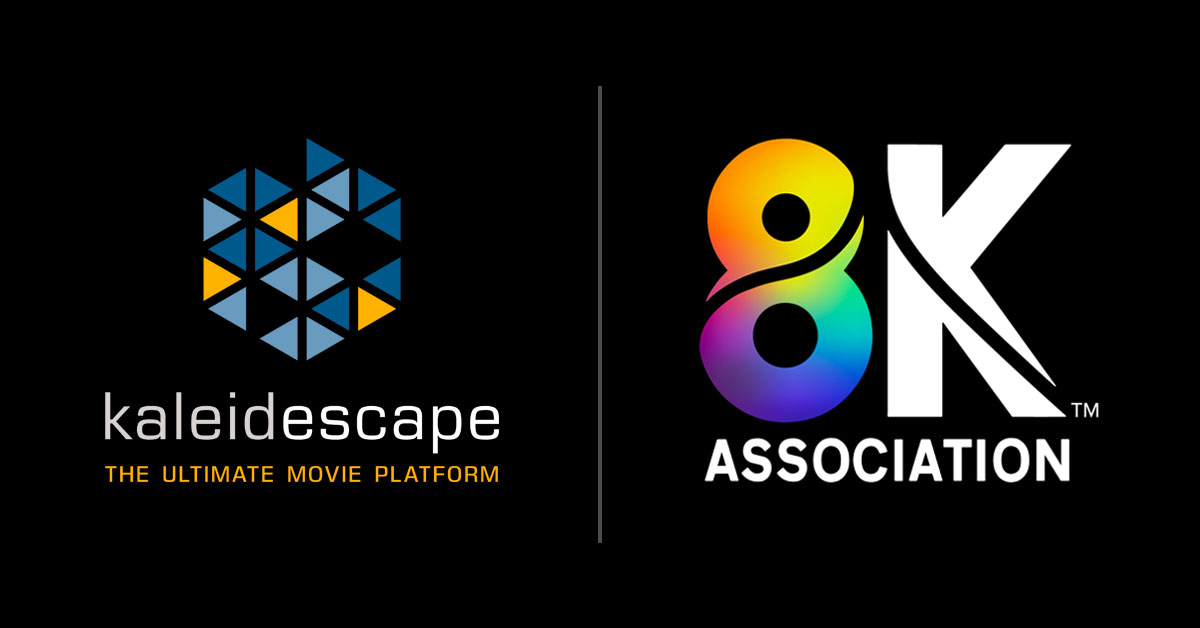ETRI/KBS Trial Demonstrates Viability of 8K OTA Delivery Via ATSC 3.0
ETRI’s Dr. Sung-IK Park discusses recent tests of 8K ATSC 3.0 MIMO transmission

ATSC 3.0 quietly achieved a significant milestone in South Korea Sept.14-18 and again Oct. 19-23 with over-the-air transmission of 8K television.
A trial, led by Dr. Sung-Ik Park, principal researcher at the country’s Electronics and Telecommunications Research Institute, made use of MIMO (multiple-input and multiple-output) technology, an option available in the 3.0 standard, to deliver 113Mbps over-the-air—a data rate that’s more than sufficient to support 8K.
ETRI, working with engineers from Korean Broadcasting System, installed a special 2x2 MIMO array on KBS’s tower in the Paju and Yeoncheon area on Gamak Mountain in Gyeonggi-do province near the border between South and North Korea.
The ETRI and KBS team tested several MIMO data rates, including 60, 90, 105 and 113Mbps, and observed their reception performance with a specially equipped test van taken to multiple locations. The test was conducted on UHF channel 56 (765-771MHz) at low power to avoid the possibility of interfering with other broadcasters in the area.
I reached out to Dr. Park to learn more about the ATSC 3.0 MIMO test, its implications for broadcasters that might at some future point wish to deploy MIMO, what a MIMO 3.0 service would mean for early adopters of NextGen TVs and what other research is underway at ETRI examining 8K television delivery via 3.0.
(An edited transcript.)
TVTechnology: ETRI and KBS conducted a couple of over-the-air tests to demonstrate the feasibility of transmitting 8K via ATSC 3.0 using a MIMO RF infrastructure. Tell me about transmission-receiver setup for the trial.
Get the TV Tech Newsletter
The professional video industry's #1 source for news, trends and product and tech information. Sign up below.

Sung-Ik Park: ETRI and Cleverlogic developed the ATSC 3.0 MIMO transmitter and receiver together. This MIMO system is 100% compatible with the ATSC 3.0 standard.
The current system supports a maximum of 5kW ERP [each horizontal and vertical antenna has 5kW ERP] because it was just developed for small-scale field trials. Cross-polarized transmitting and receiving antennas were used.
TVT: And the receiver?
SP: The MIMO receiver supports not only all the ATSC 3.0 mandatory and optional technologies, but also accurate field measurement, [including parameters such as] signal-to-noise ratio (SNR), Modulation Error Ratio (MER), Bit Error Ratio (BER), Frame Error Ratio (FER), spectrum, Channel Impulse Response (CIR) and frequency response.
TVT: Did you receive the 8K 3.0 MIMO signal in different locations?
SP: We selected six reception points and measured several parameters, like field strength and Threshold of Visibility (ToV) at each point.
TVT: Besides ETRI, KBS and Cleverlogic, who else was involved in the testing?
SP: KaiMedia provided an 8K-UHD video/audio encoder and decoder and AGOS provided a total measurement solution and related equipment for the field trial.
TVT: If I understand MIMO properly, it sends the same data as several signals via multiple transmission antennas. If so, how was that leveraged in an ATSC 3.0 context to achieve the data throughput needed to enable 8K OTA delivery of IP packets?
SP: ATSC 3.0 supports 2x2 MIMO optionally. Two vertical and horizontal antennas were used at the transmitter and receiver, respectively. If ATSC 3.0 can deliver 57Mbps at 6MHz with a single transmit and receive antenna, two cross-polarized TX and RX antennas can achieve 113Mbps at 6MHz throughput, almost double the data rate compared to a single antenna case.
At the transmitter side, 113 Mbps data is divided by two, and then transmitted through each vertical and horizontal antenna. At the receiver side, each data [stream] from the vertical and horizontal antenna is combined to make a 113 Mbps data stream. Due to several technical reasons—mainly the lack of a feedback channel from the receiver—ATSC 3.0 only supports two cross-polarized—horizontal and vertical—antennas.
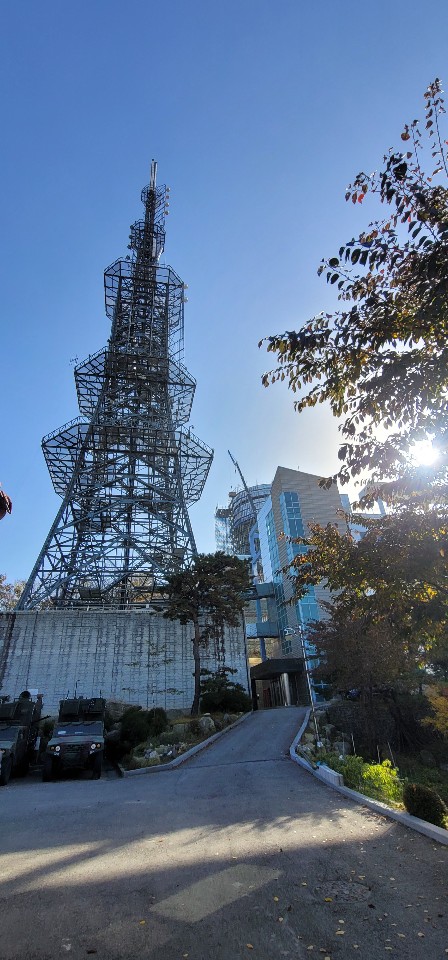
TVT: I know MIMO offers other benefits, but in the trial, it was used because of this ability to increase data throughput, right?
SP: Yes, you are right. The primary advantage of MIMO is to increase data throughput so that 8K-UHD or multiple 4K-UHDs can be delivered by OTA.
TVT: How big is an 8K HEVC-encoded signal? I’m trying to get a sense of whether you were barely able to achieve 8K or if there was sufficient bandwidth to make it happen.
SP: Of course, the higher the bitrate, the better the quality. But around a 90 to 100Mbps HEVC encoded signal is more than enough for 8K-UHD quality.
TVT: I understand that this was a trial, and that there is no commercially available system for broadcasters to deploy at the moment. But best guess, what would the cost look like to deploy ATSC 3.0 MIMO from an RF infrastructure point of view?
SP: I am not sure when this MIMO [broadcast system] could be commercialized. However, if there is a strong interest in free OTA 8K-UHD or multiple 4K UHD deliveries, broadcasters and consumer electronics companies will be able to consider ATSC 3.0 MIMO or channel bonding.
In terms of the broadcaster, some infrastructure, such as MIMO exciter, an amplifier for horizontal and vertical and MIMO antenna, will need to be added. So, that MIMO-8K infrastructure cost will be 50% more than a typical 3.0 deployment.
TVT: Would a future ATSC 3.0 MIMO deployment require a station to replace its existing transmitters and antennas?
SP: Yes, MIMO needs MIMO antennas and a new transmitter [exciter]. However, a high-power amplifier (HPA) can be reused. Note that the MIMO system uses two HPAs—one for horizontal and another for vertical. So, one existing HPA can be reused.
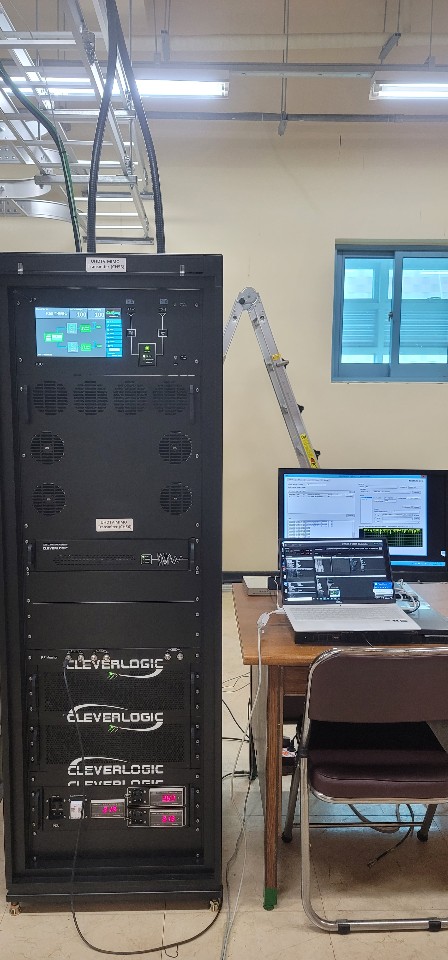
TVT: So, it sounds like there is the possibility of at least a bit of a retrofit by adding, for instance, a second antenna.
SP: This is quite an important question. In ETRI’s field trial, we installed a new 2x2 commercial MIMO antenna on the tower.
However, an antenna expert has informed me that we could also add another antenna to the existing one. For example, assuming that a horizontal antenna [in Korea] is already installed on the tower, adding an additional vertical antenna can work as a MIMO antenna.
However, we should be cautious because the isolation between cross-polarized horizontal and vertical is quite a critical performance factor. Furthermore, installation space for an additional antenna is also a consideration.
TVT: As is weight, wind load and other factors related to an existing tower. That makes me wonder if a second, future MIMO antenna has to be on the same tower as the original antenna or could it be another nearby structure?
SP: No, it should be installed on the same tower.
TVT: Is OTA delivery of 8K via ATSC 3.0 simply a science project, or is there real interest at ETRI in this for the future of OTA TV?
SP: ETRI is quite interested in 8K-UHD delivery, and we are considering three possible ways to deliver 8K-UHD. They include the ATSC 3.0 MIMO system based on two vertical and horizontal antennas; an ATSC 3.0 channel bonding system based on two separate RF channels; and an ATSC 3.0 broadband convergence system where ATSC 3.0 delivers OTA 4K-UHD and broadband—whether it’s 4G, 5G, Wi-Fi or other service—delivers metadata to make 8K-UHD.
Each method has pros and cons, but ETRI wants to show the feasibility and benefit of ATSC 3.0 for efficient 8K-UHD delivery.
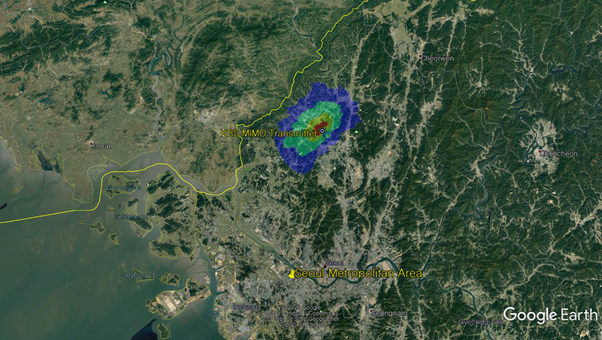
TVT: Tell me a bit more about the channel bonding solution. Do they have to be adjacent channels? If not, could a VHF and UHF channel be bonded from a data delivery point of view?
SP: ATSC 3.0 supports channel bonding optionally as well. It only supports two RF channel bonding but doesn’t restrict which RF channel should be used.
Two contiguous or two separate RF channels can be used. If one VHF channel and one UHF channel are bonded, it can further provide frequency diversity because VHF and UHF have different frequency features.
For example, the VHF channel for mobile-oriented service and the UHF channel for other-targeted services like UHD. The VHF channel delivers a part of the content, and the UHF channel delivers another part of the same content. A channel bonding receiver decodes the content delivered by the VHF channel and that delivered by the UHF channel so that it has better reception performance due to frequency diversity.
TVT: Let’s get back to the viewer at home. Granted, you conducted a trial, but if 8K 3.0 MIMO were to be deployed in the future, will the NextGen TV sets of early 3.0 adopters be obsoleted?
SP: Yes, unfortunately it is true. However, if a MIMO-supported STB is available, early NextGen TVs can be reused, I think.
TVT: OK, but what about preventing this obsolescence by doing some sort of data split as is done with SHVC where a base layer and enhancement layer are combined in receivers capable of using the enhancement bits to—in this hypothetical case—support 8K without affecting those with existing NextGen TVs, which would simply ignore the enhancement bits?
SP: Unfortunately, MIMO is not backward-compatible with existing ATSC 3.0-ready TVs. If broadcasters adopt MIMO, a new TV or STB will be required. Assuming that you have a MIMO-supported TV, a vertical antenna can provide OTA HD or 4K, and a horizontal antenna can provide metadata to make 8K service. For example, the base layer of SHVC is delivered by the vertical antenna, and enhancement-layer data of SHVC is delivered by a horizontal antenna.
If a MIMO-supported TV or STB receives a vertical base-layer only, you can watch at least OTA HD or 4K service. This is a possible scenario for mobile service as a mobile terminal typically uses a vertical antenna.
If a MIMO-supported TV or STB receives both vertical base-layer and horizontal enhancement-layer, you can watch 8K by combining two layers. This is the same as channel bonding. RF1 delivers the base-layer, and RF2 delivers the enhancement-layer.
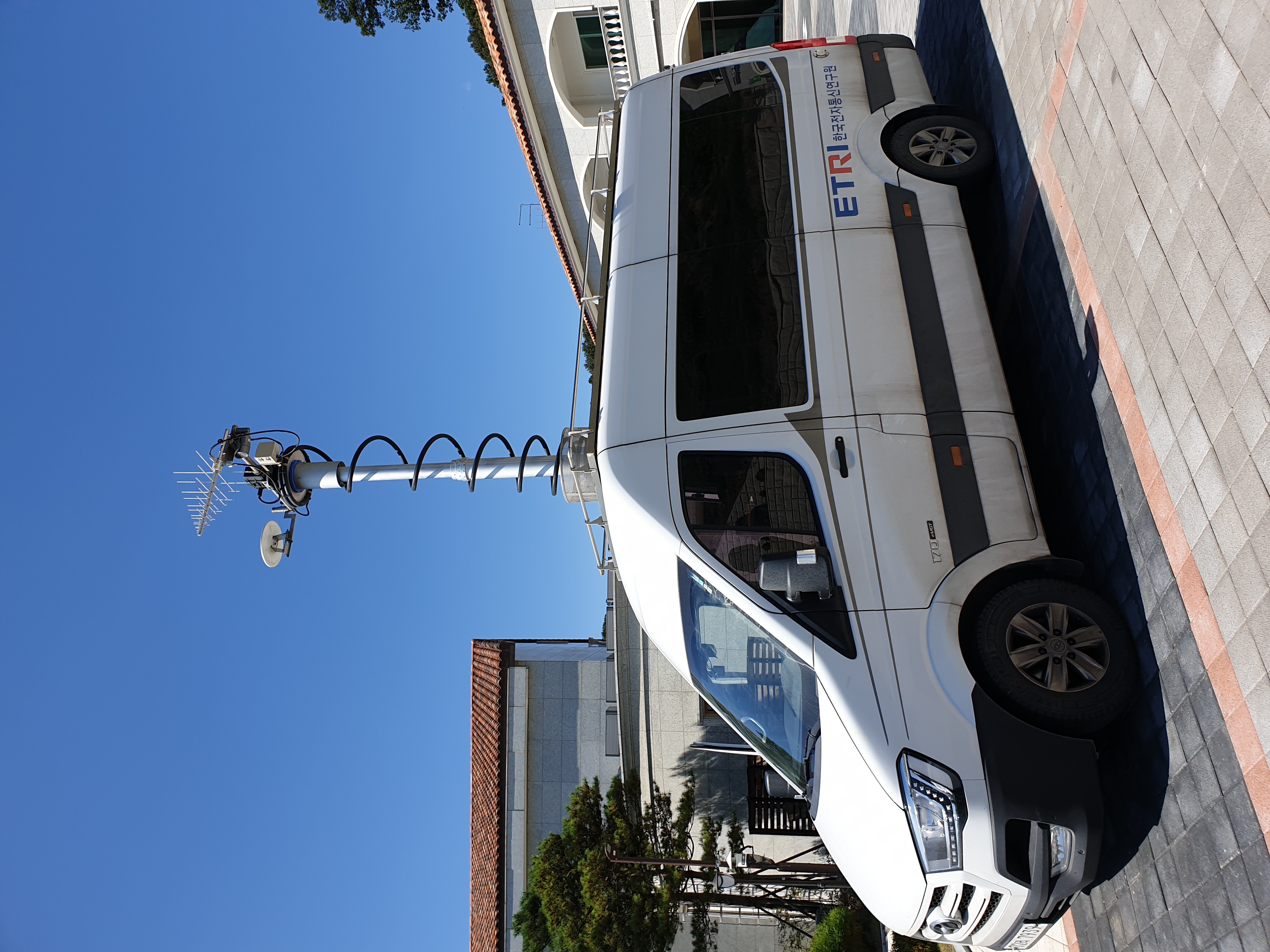
TVT: Is there anything else you would like to add about 8K via ATSC 3.0 OTA or other ETRI 3.0-related projects?
SP: ETRI has conducted several projects aimed at helping ATSC 3.0 to succeed. Among them are ATSC 3.0 SFN optimization; development of MATV (master antenna TV) technology for an apartment building; on-channel repeater development for an SFN; professional measurement receiver development for ATSC 3.0; and convergence of ATSC 3.0 and 5G. These all are essential for ATSC 3.0 and are widely used in the industry.
Recently, ETRI and Lowasis started field verification of ATSC 3.0 diversity receivers. Since a diversity receiver provides significant gain compared to a single antenna receiver, it is crucial for ATSC 3.0 mobile. However, since it requires enough space for multiple antenna installations, we are focusing on public transportation systems like a city bus. In ETRI’s preliminary trial in Seoul, the diversity receiver’s performance was more than perfect.
Phil Kurz is a contributing editor to TV Tech. He has written about TV and video technology for more than 30 years and served as editor of three leading industry magazines. He earned a Bachelor of Journalism and a Master’s Degree in Journalism from the University of Missouri-Columbia School of Journalism.

